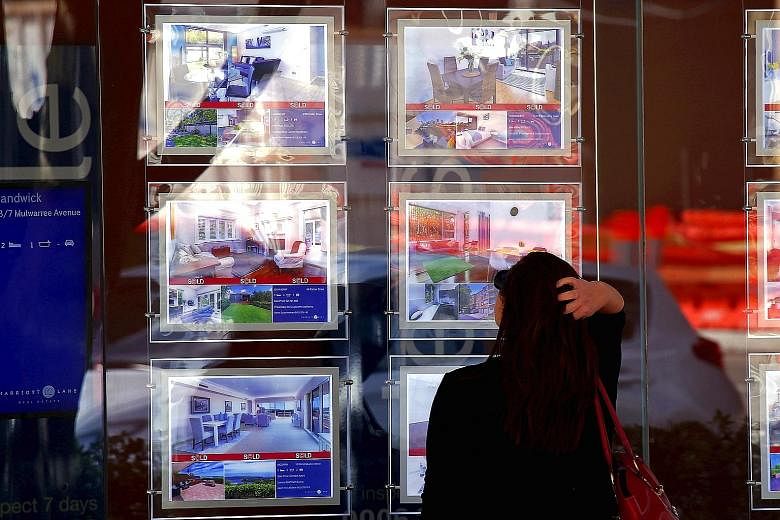SYDNEY • Australia's central bank saw growing risks in the nation's hot housing market when it left rates steady earlier this month, underlining the case against further easing in policy.
Housing affordability, or the lack of it, has become a hot-button issue for the conservative government of Prime Minister Malcolm Turnbull, which has promised measures to ease the problem in its May budget.
Minutes of its March 7 meeting released yesterday show the Reserve Bank of Australia (RBA) to be generally optimistic about the A$1.7 trillion (S$1.8 trillion) economy, which is transitioning away from a boom in mining investment which has lasted more than a decade.
However, board members felt there had been a "build-up of risks" in the housing market as borrowing for investment fuelled brisk price rises in Sydney and Melbourne.
The RBA's warning comes as the economic divide in Australia sharpens. Meanwhile in the west, the heart of an unwinding mining-investment boom, property prices are falling and businesses are going bust as demand is weak.
-
4.1%
Rise in Australian house prices in the fourth quarter of last year, from the previous three months.
The Australian dollar was little changed after the report, buying 77.28 US cents at 12.33pm in Sydney. It was trading at 1.08 against the Singdollar.
"The Australian housing market continues to cause much angst around poor affordability and high household debt," said chief economist Shane Oliver at AMP Capital.
"Recent RBA commentary strongly hints that more macroprudential measures to tighten lending standards are on the way. This is in part about reducing the risks to financial stability when it's too early to consider raising rates," he pointed out.
Separately, government data released yesterday shows Australian house prices rose 4.1 per cent in the fourth quarter of last year, from the previous three months.
That is the highest quarterly increase since mid-2015. The central bank has been willing to tolerate inflation below its target to avoid adding rate fuel to east coast property markets, aided by economic growth forecast to accelerate to 3 per cent this year and unemployment holding below 6 per cent.
But in the intervening period between the March 7 meeting and yesterday's release, the jobless rate jumped to 5.9 per cent from 5.7 per cent, while policymakers were already concerned about the real strength of the labour market.
Figures from property consultant CoreLogic show prices are growing at an annual 19 per cent in Sydney, while gains across the five capital cities came to 12.7 per cent.
Much of that fever has been fuelled by borrowing for investment properties, driving household debt up to a record 180 per cent of disposable income.
RBA governor Philip Lowe has argued that there is little economic benefit in lowering rates from an already low 1.5 per cent if all it does is lift debt to levels that would affect consumer spending power.
Data out recently shows retail sales in January grew at a tepid pace for a third straight month, while the outlook for capital expenditure remains uninspiring.
The RBA did note that tighter supervision had contributed to "some" strengthening in lending standard by the banks, which had also raised rates on some mortgage products recently.
With Mr Lowe repeatedly arguing against cutting rates further, financial markets have all but priced out the chance of another cut this year.
Some investors are even toying with the idea of hike early next year. "In our view, it would take a sustained loss of momentum in job creation or a fall in dwelling prices for Lowe to entertain the idea of taking the policy rate lower," said Mr Gareth Aird, senior economist at Commonwealth Bank.
"Neither outcome is in our central scenario and as such, we see the RBA on hold over 2017 and well into 2018."
REUTERS, BLOOMBERG

